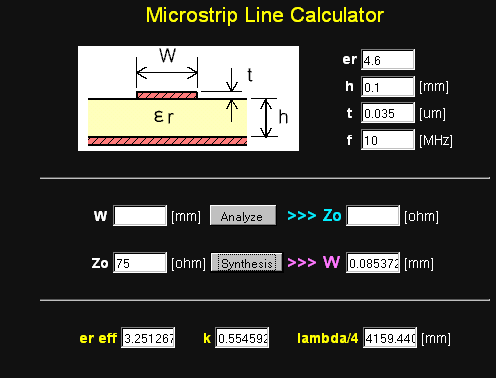- Joined
- Oct 9, 2009
- Messages
- 10,865
- Helped
- 2,065
- Reputation
- 4,130
- Reaction score
- 1,596
- Trophy points
- 1,403
- Location
- Yorkshire, UK
- Activity points
- 57,270
bert_kak said:Guys any idea on how much line width will I use for a 75ohms composite video signal? Thanks
It depends on the board thickness and number of layers. Try an impedance calculator. Download Appcad or use something like this:
https://www.technick.net/public/code/cp_dpage.php?aiocp_dp=util_pcb_imp_calculator
tennythomas said:The Simple PCB Impedance Calculator, PCB Stackup Impedance Calculator and
Trace Current Calculator are available in this link - **broken link removed**.
Requires registration.
Keith.
